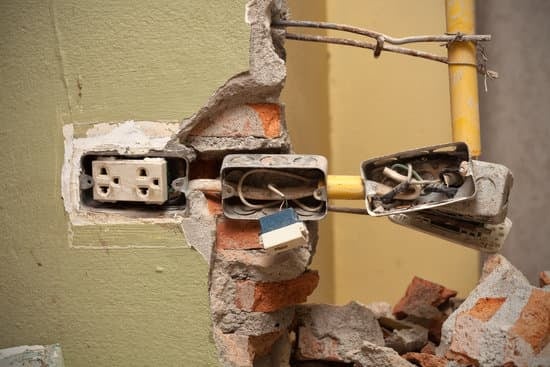In today’s competitive home improvement market, writing a compelling ad is essential to stand out from the crowd and attract potential customers. Whether you’re a contractor, a real estate agent, or a home improvement retailer, understanding the art of crafting an attention-grabbing headline and body can make all the difference in your advertising success.
In this article, we’ll explore the key elements of creating a powerful home improvement ad that resonates with your target audience and drives results.
Understanding how to write a home improvement ad headline and body is crucial for effectively communicating the value of your products or services. By mastering this skill, you can capture the attention of potential customers and compel them to take action. From identifying your target audience to leveraging the power of visuals, we’ll provide you with actionable tips and tricks to enhance the effectiveness of your advertising efforts.
The first step in writing an effective home improvement ad is identifying your target audience and understanding their needs and preferences. By considering key factors such as demographics, interests, and pain points, you can tailor your message to resonate with potential customers. Crafting a compelling headline that speaks directly to your audience’s desires is essential for capturing their attention and piquing their interest in what you have to offer.
Identifying Your Target Audience
Demographics
The first step in identifying your target audience for a home improvement ad is to consider the demographics of the people you want to reach. This includes factors such as age, gender, income level, geographic location, and family status. Understanding these demographics will help you tailor your message to appeal to the specific needs and interests of your target audience.
Psychographics
In addition to demographics, it’s important to consider the psychographics of your target audience. This refers to their values, interests, attitudes, and lifestyle. For example, are they environmentally conscious? Are they interested in luxury home improvements? By understanding the psychographics of your audience, you can create ad content that resonates with their preferences and motivates them to take action.
Behavioral Factors
Finally, consider the behavioral factors that may influence your target audience’s decision-making process. This includes their purchasing behavior, brand loyalty, and online habits. Do they frequently research home improvement projects online?
Are they more likely to make a purchase after seeing an ad on social media? Understanding these behaviors will help you determine where and how to place your home improvement ad for maximum impact. By taking into account demographics, psychographics, and behavioral factors, you can effectively identify your target audience and craft a compelling home improvement ad that resonates with them on a personal level.
Crafting the Perfect Headline
When it comes to writing a home improvement ad, the headline is arguably the most important element. It’s the first thing that potential customers will see, and it needs to grab their attention immediately. One of the best tips for crafting a perfect headline is to be clear and concise.
You want to communicate the main benefit or value proposition of your home improvement service in as few words as possible. This will ensure that your target audience understands what you’re offering right away.
Another important trick to grabbing attention with your headline is to create a sense of urgency. Words like “limited time offer” or “act now” can encourage potential customers to take action. Additionally, using power words such as “exclusive,” “guaranteed,” or “proven” can help make your headline more compelling.
Finally, consider using a question or a bold statement in your headline to pique curiosity. Asking a question can engage potential customers and make them think about how your home improvement services could benefit them.
On the other hand, a bold statement can be attention-grabbing and make people curious enough to read on. By utilizing these tips and tricks, you can craft a powerful headline that captures attention and entices potential customers to learn more about what you have to offer.
| Tip | Trick |
|---|---|
| Be clear and concise | Create a sense of urgency |
| Use power words | Ask questions or make bold statements |
The Anatomy of a Great Home Improvement Ad Body
Crafting the body of a home improvement ad is just as important as creating an attention-grabbing headline. The content of the ad is where you can provide valuable information about your products or services and entice potential customers to take action. Here are some key elements to consider when structuring the body of your home improvement ad:
- Compelling copy: Use persuasive language that addresses the needs and desires of your target audience. Highlight the benefits of your products or services and explain how they can improve the lives of your customers.
- Clear call-to-action: Provide a clear and concise call-to-action that tells the audience what you want them to do next. Whether it’s visiting your website, contacting you for more information, or making a purchase, make sure the next steps are clearly outlined.
- Important details: Include essential information such as pricing, special promotions, contact details, and any other pertinent details that would influence a potential customer’s decision-making process.
In addition to these key elements, it’s essential to consider the overall structure and format of your ad body. Utilize bullet points or numbered lists to make important details easily scannable for readers. Use subheadings to break up large chunks of text and make it easier for people to find the information they’re looking for.
Lastly, be mindful of the tone and voice of your ad body. Consider whether it should be more formal or conversational based on your target audience and industry. Keep in mind that consistency in branding and messaging across all platforms is crucial for creating a cohesive brand image. By incorporating these elements into the body of your home improvement ad, you can increase its effectiveness in driving engagement and conversions with your audience.
Leveraging the Power of Visuals
Incorporating compelling visuals such as images and videos into your home improvement ad can significantly impact its effectiveness. Visual content has the power to captivate the audience’s attention and convey your message in a more engaging way. Here are some tips for leveraging the power of visuals in your home improvement ad:
1. High-Quality Images: When selecting images for your ad, opt for high-resolution, professional photographs that showcase the beauty and quality of your products or services. Blurry or low-quality images can detract from the overall appearance of your ad and may fail to make a strong impact on viewers.
2. Showcasing Before-and-After Shots: If applicable, consider including before-and-after shots in your ad to demonstrate the transformative effects of your home improvement offerings. This visual storytelling technique can effectively highlight the results that potential customers can expect, ultimately driving interest in your products or services.
3. Engaging Videos: Consider incorporating videos into your home improvement ad to provide a more dynamic and immersive experience for viewers. Whether it’s a virtual tour of completed projects, client testimonials, or informative demonstrations, videos can help convey information in a visually appealing format.
By strategically incorporating high-quality images and engaging videos into your home improvement ad, you can enhance its overall appeal and capture the attention of your target audience more effectively. Remember to align visual content with the messaging of your ad to create a cohesive and impactful marketing piece that resonates with potential customers.
A/B Testing and Analyzing Results
When it comes to fine-tuning your home improvement ad for success, A/B testing is an essential strategy that can help you optimize your ad for maximum impact. A/B testing, also known as split testing, involves creating two different versions of your ad and showing them to similar audiences to see which one performs better.
This process allows you to make data-driven decisions about what elements of your ad are most effective in capturing the attention of your target audience.
What to Test
In A/B testing, it’s crucial to focus on specific elements of your ad that can have a significant impact on its performance. For example, you might test different headline variations, wording choices, calls to action, or visual components. By isolating these variables and measuring their impact on key metrics such as click-through rates or conversions, you can gain valuable insights into what resonates most with your audience.
Interpreting Results
Once you’ve conducted A/B tests and collected data on how each version of your ad performed, it’s important to carefully analyze the results. Look for patterns or trends that indicate which elements were most successful in capturing audience attention and driving action. Understanding the data will allow you to make informed decisions about how to refine and optimize your ad for better performance.
Iterative Refinement
A/B testing should be an ongoing process rather than a one-time event. Continuously refining and improving your home improvement ad based on the insights gained from testing will help you keep pace with changing customer preferences and behaviors. By iterating on your ad content and design based on real-world performance data, you can increase the likelihood of achieving meaningful results and driving success for your home improvement campaign.
Case Studies and Examples
When it comes to creating effective home improvement ads, studying successful campaigns can provide valuable insights and inspiration. Case studies and examples from past ad campaigns can help you understand what has worked for others in the industry, as well as identify potential strategies that you can apply to your own advertising efforts.
One example of a successful home improvement ad campaign is the “Before and After” approach. Showcasing the transformation of a space or property can be a compelling way to capture the attention of potential customers. By highlighting the improvements made and the positive impact on the overall look and functionality, this type of ad can resonate with audiences looking for similar upgrades in their own homes.
Another successful strategy is leveraging customer testimonials and reviews in ad campaigns. Incorporating real-life experiences and positive feedback from past clients can help build trust and credibility with prospective customers. When people see that others have had positive outcomes from a particular home improvement service or product, they are more likely to consider it for their own needs.
Additionally, utilizing social media platforms to showcase before-and-after photos, videos, and interactive content has been an effective approach for many home improvement businesses. These platforms allow for direct engagement with audiences, providing opportunities for sharing authentic stories of successful renovations, building community, and gathering feedback to inform future ad campaigns.
| Successful Strategy | Examples |
|---|---|
| “Before and After” Approach | Showcasing transformation of spaces or properties |
| Leveraging Customer Testimonials | Incorporating real-life experiences and positive feedback from clients |
| Social Media Engagement | Utilizing platforms for sharing authentic stories of successful renovations |
Conclusion
In conclusion, writing a powerful home improvement ad requires careful consideration of your target audience, the use of attention-grabbing headlines, well-structured ad bodies, and strategic visuals. By understanding the importance of each element and leveraging A/B testing and analysis, you can fine-tune your ad for success. Additionally, studying case studies and successful examples can provide valuable insights for crafting effective home improvement ads.
To recap, when identifying your target audience, consider factors such as demographics, preferences, and pain points. This will allow you to tailor your headline and ad body to resonate with your potential customers.
Crafting an attention-grabbing headline involves using persuasive language, highlighting benefits, and creating a sense of urgency or curiosity. In the body of your ad, it’s important to structure your content in a way that flows logically and highlights the unique selling points of your product or service.
Furthermore, incorporating high-quality images and videos can significantly enhance the impact of your home improvement ad. Visuals can showcase the before-and-after results of your work or demonstrate the features and benefits of what you’re offering.

Lastly, continually test different elements of your ad and analyze the results to make data-driven decisions for optimization. By following these final tips and taking a strategic approach to writing your home improvement ad, you can increase its effectiveness and drive better results for your business.
Frequently Asked Questions
How Do You Write a Good Headline for an Ad?
Writing a good headline for an ad involves capturing the attention of your audience, being clear and concise, and creating intrigue or curiosity. It should also be relevant to the product or service being promoted, and offer a benefit or solution to the potential customer.
Using powerful words, numbers, and posing a question can also help make the headline more compelling.
What Is an Example of a Headline in Advertising?
An example of a headline in advertising could be “Unleash Your True Potential – Try Our Revolutionary Fitness Program Today!” This headline captures attention by suggesting transformation and improvement, while also offering a solution to the reader’s desire to improve their fitness.
How Do You Write a Catchy Headline?
Writing a catchy headline involves utilizing strong language, aiming for emotional or practical appeal, using numbers or interesting facts, and addressing the target audience directly. A catchy headline should also inspire curiosity, urgency or excitement in order to draw in potential customers and encourage them to continue reading the ad or message.

I’m thrilled to have you here as a part of the Remodeling Top community. This is where my journey as an architect and remodeling enthusiast intersects with your passion for transforming houses into dream homes.





